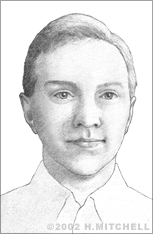Andrew Heafitz
When Andrew Heafitz was a child, family members could tell by his passion for rockets, airplanes, Legos, and building toys that he was a natural engineer. By the time he was in junior high school, he was creating gadgets, including a high-speed camera made of balsa wood that he flew in a model rocket. He applied for and received his first U.S. patent for the camera shutter. In high school, he was a Science Talent Search Finalist.
After high school, the Newton, Massachusetts native enrolled at the Massachusetts Institute of Technology (MIT), where he majored in mechanical engineering. For his undergraduate thesis, he developed a remote balloon photography system. The tethered system uses a camera that is attached to a 10-foot helium balloon. A modified version of Heafitz’s system using a tele-operated video camera was employed during an archeological expedition that further uncovered a submerged portion of an ancient Greek city that dates to 5,000 B.C. The system also assisted in the recovery of the pirate ship, Whydah, which sunk in 1716 off the coast of Cape Cod, Mass.
Heafitz has also worked on a new rocket camera system for the U.S. Army that could be used to conduct surveillance. His aerial photography system consists of a patent pending rocket the size of a soda can, with a video camera and transmitter inside the nosecone. The pictures from the flight are transmitted to a laptop computer where the images can immediately be displayed in an easy-to-view format. In the fall of 2001, he used his rocket camera concept to form TacShot Inc., a company which developed and produced the low-cost aerial surveillance systems.
Heafitz also invented devices that are low-cost and low-tech, making them ideal for production and use in developing countries. While taking an MIT course in humanitarian demining, he developed a tool for digging up buried landmines. The device, a micro-flail (a shaft with several chains attached) that is powered by a chain-saw engine, uncovers landmines quickly and safely. He also created a wooden practice mine that can be used for training. Stepping on the device triggers a pop-up flag.
Another one of his inventions in this area is a gas tank leak detection device that is purely mechanical and uses no electrical components, thereby eliminating the risk of explosion from electrical sparks near the storage tanks. The device indicates contamination of surrounding ground water through a signal flag that deploys if gasoline is detected, making it more practical to check wells frequently.
Before returning to MIT in 1998 for his graduate studies, Heafitz worked as a Product Design Consultant for Arthur D. Little, where he designed and helped build the “Plant Growth Facility” experiment, which was flown on the space shuttle and was used to look at how plants grow without the influence of gravity. There, he also worked on a carbon fiber bicycle for a leading bicycle manufacturer, night vision goggle harnesses, and surgical tools. He also worked for Solectria Corporation as the Director of Truck Production Engineering. He was the lead engineer there for the conversion of both popular pick-up trucks and delivery trucks to electric vehicles.
At MIT, for his master’s thesis, Heafitz helped to build a low-cost, kerosene-liquid oxygen rocket engine, using a solar-car motor to get it up to full speed before igniting. His experience and familiarity with solar-powered cars, which Heafitz builds and races as a hobby, inspired his ideas. The design simplifies the high-performance engine needed to reach space and can be manufactured at one-tenth of the cost of existing rocket engines. Heafitz also invented a method of using the solar-car motor as a dynamometer to determine if the turbine produces enough power for the engine to be self-sustaining.
Heafitz was the 2002 winner of the $30,000 Lemelson-MIT Student Prize and was named one of the top Innovators under 35 by MIT Technology Review in 2003. Heafitz received his PhD in mechanical engineering in 2005 from MIT. He is currently Vice President of Product Development at Terrafugia, a company co-founded by Carl Dietrich, the 2006 Lemelson-MIT Student Prize winner, that is working to develop a flying car.


